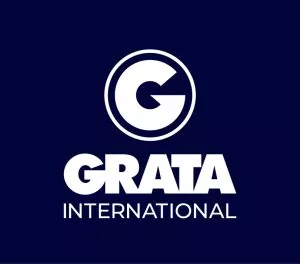1. General Framework
1.1 Major Features
The mining sector plays an important role in the Kazakh economy, at 13-14% of the country's GDP and more than 20% of its exports.
The Kazakhstan state balance takes into account mineral reserves for 102 types of mineral raw materials, including 40 types of solid minerals.
If compared with world reserves, Kazakhstan ranks:
- first in terms of total reserves and quality of chrome ores (according to the US Geological Survey, 86% of the world's reserves of chrome ores are in Kazakhstan and South Africa);
- second in terms of reserves and resources of uranium and silver;
- third for confirmed reserves of lead and proven reserves of manganese ores;
- fourth for confirmed reserves of zinc;
- fifth in terms of proven reserves of iron ore (and in terms of their quality, Kazakhstan ranks third in the world);
- eighth in terms of (i) the quantity of confirmed reserves of tin, with the quality (Syrymbet deposit) being not inferior to the main world producers and (ii) gold reserves (mainly represented by small and medium-sized deposits by the standards of the industry);
- ninth in proven cobalt reserves and confirmed reserves of titanium dioxide; and
- thirteenth in terms of proven nickel reserves and bauxite reserves (the latter being in eighth place in terms of mine production).
From 2000-17, USD79 billion was invested into the mining sector.
By adopting the Code on Subsoil and Subsoil Use dated 27 December 2017 (the "SSU Code") effective from 29 June 2018, Kazakhstan transferred from a contractual regime to a licensing regime for solid minerals (except for uranium, which remained under a contractual regime). The SSU Code is based on the Western Australian model. The purpose has been to boost geological exploration and remove administrative burdens for subsoil users.
These measures allowed Kazakhstan to become "the most attractive jurisdiction in the [Asia] region based on its investment attractiveness rating" according to the Fraser Institute Annual Survey of Mining Companies 2017, in which Kazakhstan took the 24th position compared with the previous 73rd position.
At present, potential subsoil users may see territories available for subsoil use operations on the state e-map. Only subsoil plots included in the State Subsoil Fund Management Programme (the "Programme") are available for applicants. (Applicants may also request the authorities to include a relevant prospective territory in the Programme.) The Programme is periodically updated, and the authorities plan to cover all the territory of Kazakhstan by the end of 2022. For major part of territories, currently state geological surveys are made and after completion of such works, the territories will become accessible for exploration.
If earlier exploration contracts were concluded within 1.5 years from the date of winning a tender, under the SSU Code exploration licences are issued within ten business days under the principle "first come, first served". (For new territories recently added to the Programme, there is a one-month preliminary period from the application filing commencement date. Lodging of two or more applications for the same block(s) during this period causes an auction between the applicants.)
The SSU Code entitled subsoil users to estimate their reserves under the CRIRSCO-aligned KAZRC standard, which eases the evaluation of projects by the international community (earlier reserves estimation was made under the GKZ standards only).
The National Mineral Resources Data Bank with a paper-free mode is planned to commence by July 2021.
Such large foreign mining companies as Glencore, Rio Tinto, Iluka Resources, Yildirim Group, Korea Resources Corporation, Polymetal, Russian Copper Company, Ulmus Fund, Areva Sa, ArcelorMittal and Rusal operate in Kazakhstan.
1.2 Legal System and Sources of Law
Kazakhstan has a civil law-based legal system. (Recently the Astana Financial Centre was established, which is entitled to resolve investor disputes based on common law principles.)
The SSU Code is the principal law regulating the mining sector. A number of government decrees and orders of the Minister of Industry and Infrastructural Development specify issues envisaged by the SSU Code with more detail.
Certain issues related to precious metals are governed by the Law on Precious Metals and Precious Stones dated 14 January 2016 (the "Precious Metals Law").
There are also other legislative acts regulating related issues, including the Tax Code, the Land Code and the Environmental Code.
1.3 Ownership of Mineral Resources
According to Article 6 of the Kazakhstan Constitution, the subsoil is owned by the state. Violations of state subsoil ownership are punishable by law. Transactions concluded in violation of state subsoil property are null and void.
Mineral resources extracted by subsoil users are their property. Mining companies are also entitled to possess, use and dispose of technogenic mineral formations created as a result of their activity and located at their subsoil use plots.
Certain restrictions may apply to the export of certain minerals, such as the following.
- Under the Precious Metals Law, the owner of raw minerals containing precious metals (eg, gold) is obliged to propose to the Kazakhstan National Bank (which has the priority right to buy out fine gold) fine gold refined at foreign gold-refining plants. Moreover, a Kazakh subsoil user, before exporting gold from Kazakhstan to a foreign refinery, shall obtain waivers of local refining plants.
- In some cases the authorities may establish temporary bans (eg, for export of gold).
- In certain cases, exporters shall preliminarily obtain export licences (eg, for the export of natural crude stones, non-ferrous metals, precious metals and precious stones and diamonds).
1.4 Role of the State
In the mining sector the state is represented by the competent authority – currently the Ministry of Industry and Infrastructural Development (the MIID) – which is authorised to grant and terminate subsoil use rights (SURs) for solid minerals (except for uranium) and carries out control over subsoil users' compliance with their obligations related to SURs. A SUR means "the opportunity afforded by the SSU Code to use subsoil on a reimbursable basis within the limits of an allocated site for entrepreneurial purposes within a certain term". (The competent authority for uranium is the Ministry of Energy. As SURs for uranium are regulated differently compared with other solid minerals, unless specifically mentioned otherwise, this chapter describes mining issues excluding uranium.)
Before 29 June 2018, SURs were granted under contracts for the right of exploration, mining, or combined exploration and mining (SUCs). Since 29 June 2018, SURs have been granted under subsoil use licences (SULs), as exploration or mining ones.
Two national companies in the mining sphere (JSC Kazgeology National Exploration Company and JSC Tau-Ken Samruk National Mining Company) are entitled to obtain SULs for territories not included in the Programme until 29 June 2020.
These companies are active in establishing joint ventures with investors for subsoil use projects.
There is also a state-owned entity (the Republican Centre for Geological Information Kazgeoinform LLP) acting as a national operator for the collection, storage, processing and provision of geological information and responsible for maintenance of the National Mineral Resources Data Bank.
It is worth mentioning the Geology Committee under the Ministry of Ecology, Geology and Natural Resources, which, inter alia, maintains the e-map of areas available for subsoil use operations and provides access to geological information.
1.5 Nature of Mineral Rights
As noted in 1.3 Ownership of Mineral Resources, to explore or mine, an entity shall have a SUR formalised either by a SUC or a SUL. A SUR is a non-divisible proprietary right, which can be pledged, alienated, etc.
1.6 Granting of Mineral Rights
The following authorities grant SURs depending on the category of minerals:
- the MIID grants SURs for solid minerals (except for uranium);
- the Ministry of Energy grants SURs for hydrocarbons and uranium; and
- local executive bodies (ie, akimats of regions, Nur-Sultan, Almaty and Shymkent) grant licences for the mining of commonly occurring minerals and licences for artisanal mining.
1.7 Security of Tenure
Exploration licences for solid minerals are granted for up to six years with the possibility of an extension for five more years. Their owners have an exclusive right to use the subsoil for the purpose of exploration of solid minerals, including the search for deposits of solid minerals and an appraisal of their resources and reserves for subsequent mining.
No transfer of an exploration licence is permitted within one year after its issuance.
If a deposit is discovered, the subsoil user has an exclusive right to obtain a mining licence (provided the application is filed during the exploration period), if the discovery is confirmed by a report on estimation of resources and reserves of solid minerals. No assignment of such exclusive right is permitted.
The territory of an exploration licence may not exceed 200 blocks (each block being approximately 2 km²).
Originally published in Chambers and Partners, January 22, 2020.
To see the full article click here
The content of this article is intended to provide a general guide to the subject matter. Specialist advice should be sought about your specific circumstances.




